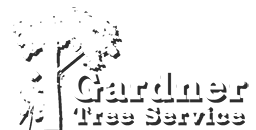By Lyle Gardner, President of Gardner Tree Service in New Orleans, LA
Down here in South Louisiana, it ain’t just the crawfish boilin’—it’s the air itself. Between the humidity that hits you like a wet blanket and rain that shows up uninvited more often than your neighbor’s cousin at a BBQ, it’s no wonder trees around here are prime targets for fungus.
Fungal infections are one of the most common threats to tree health in the Gulf South. The warm, damp environment is a paradise for mold, mildew, rot, and all kinds of nasty spores. Left unchecked, tree fungus can lead to decline, structural weakness, and even total tree loss.
Let’s break down how to spot the signs, what to do about them, and when to call in the pros.
Common Tree Fungi in the Gulf South
In our neck of the woods, some of the most common culprits include:
-
Powdery Mildew: Looks like someone dusted your leaves with baby powder.
-
Sooty Mold: A dark, crusty coating that often grows on sugary residue from pests like aphids.
-
Root Rot (Armillaria or Phytophthora): Lives in the soil and attacks from below—often fatal.
-
Anthracnose: Causes brown spots, curling leaves, and early leaf drop.
-
Ganoderma (Bracket Fungi): Those big shelf-like mushrooms growing at the base? Bad news.
Signs Your Tree Has a Fungus Problem
Here’s what to look for—because the earlier you catch it, the better your chances of saving the tree:
-
Mushrooms or fungal bodies growing on or around the base
-
Discolored or spotted leaves (especially black, brown, or white blotches)
-
Wilting, curling, or premature leaf drop
-
Bark peeling or cracking with soft or spongy wood underneath
-
A funky smell, especially near the roots
-
Visible decay or cavities
If your tree’s suddenly looking sad or “melting,” don’t chalk it up to the summer heat just yet.
Why It’s Worse in Hot, Humid Climates
Fungi love moisture and heat. Louisiana summers provide both in generous supply. Add poor drainage, compacted soil, or heavy rainfall to the mix, and you’ve basically rolled out the red carpet for fungal invasion.
Trees already stressed by drought, pests, improper pruning, or construction damage are especially vulnerable.
Treating Tree Fungus: What You Can Do
1. Improve Airflow & Sunlight
Prune crowded branches to allow better airflow and light penetration. Fungi thrive in dark, damp areas.
2. Remove Affected Areas
Trim off infected limbs or leaves using sterilized tools. Don’t compost the debris—bag and trash it.
3. Adjust Watering Practices
Overwatering is a big no-no. Water deeply but less often, and avoid getting the leaves wet.
4. Apply Fungicides (Carefully)
Use a professional-grade fungicide suited to your specific fungus. Timing and application matter—always follow label instructions or call a certified arborist for help.
5. Treat the Soil
For root fungi like Phytophthora, soil treatment might be necessary. This is best handled by a pro.
When to Call the Pros
If the fungus has reached the trunk, is spreading quickly, or you’re seeing mushrooms at the base, it’s time to bring in a certified arborist. Some fungi indicate internal decay that can lead to hazardous tree failure—especially during hurricane season.
At Gardner Tree Service, we don’t just treat symptoms—we look at the whole ecosystem around your tree. Sometimes the fungus is just a sign of a deeper issue like poor drainage, root damage, or nutrient deficiency.
Prevention Tips
-
Plant fungus-resistant tree species when possible
-
Mulch correctly—keep it a few inches away from the trunk
-
Avoid mechanical injuries from lawnmowers or weed trimmers
-
Keep trees pruned and healthy year-round
-
Schedule routine inspections—especially after storms
Final Thought
Fungal infections are sneaky, but with a watchful eye and prompt care, your trees can thrive even in the muggiest Louisiana summer. If you’re ever unsure what you’re dealing with, give us a call—we’ll get our boots on and take a look.
After all, a healthy tree is a happy tree. And in South Louisiana, we’ve got enough to worry about without sick oaks leaning on our roofs.


